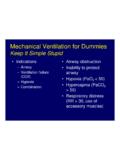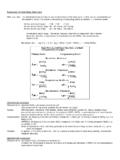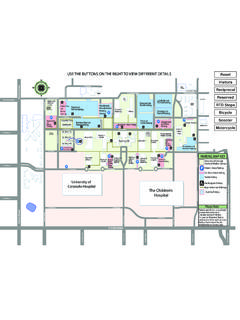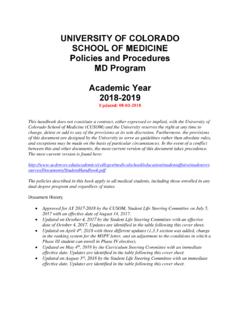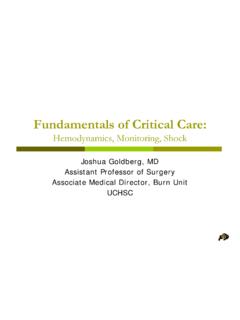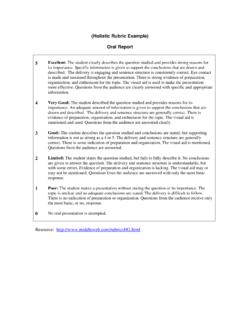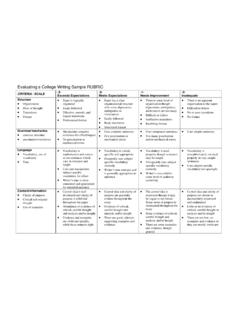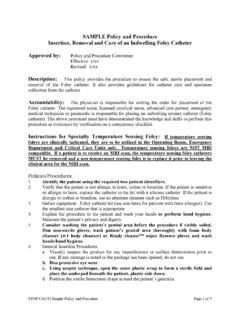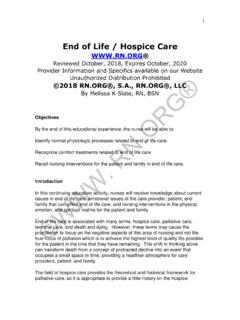Transcription of VERY BASIC RESPIRATORY PHYSIOLOGY
1 mechanical ventilation : BASIC review VERY BASIC RESPIRATORY PHYSIOLOGY What do the lungs do? Yes, the simple answer is gas exchange: Oxygenation: exactly that, the transfer of oxygen from the air we breathe to the blood. ventilation : the transfer of CO2 from the blood to the alveoli and out of the body An important concept to remember: normal breathing is a negative-pressure phenomenon; mechanical ventilation is POSITIVE pressure ventilation . The end result is still airflow and gas exchange, but the mechanics are different. Some BASIC physiologic concepts to review (look in any good textbook or on the web): Air flow Compliance [Volume change per unit of pressure change across an elastic structure] Elastance [The reciprocal of compliance, a measure of the change in pressure per unit change in volume; , stiffness] Resistance [Driving pressure divided by flow (P/V)] Dead Space [the portion of each breath that does not participate in gas exchange] Anatomic dead space: the volume of the conducting airways Physiologic dead space: also includes the contribution of alveoli that are well-ventilated but poorly perfused.
2 Other important concepts to review : PO2 (PaO2 and PAO2), SaO2 (hemoglobin oxygen saturation), CaO2 ( oxygen content), the PCO2 equation, the alveolar gas equation. IMPORTANT EQUATIONS TO KNOW A Change in pCO2 of 10 torr = a change in pH of The three steps to calculate the AaO2 difference: PIO2 = barometric pressure x FIO2 PAO2 = PIO2 (pCO2/R) AaO2 difference = PAO2 pO2 RESPIRATORY FAILURE Why intubate and mechanically ventilate your patient? 1. Airway protection (this is not RESPIRATORY failure : this implies no derangements in gas exchange, but a CNS or mechanical loss of airway protection/patency) 2. Hypoxic RESPIRATORY failure pO2 < 50 on 100% NRB Decreased ambient FiO2, Increased pCO2, Diffusion block, V/Q mismatch, Right-to-left shunt 3.
3 Hypercarbic RESPIRATORY failure pH < pCO2 > 50 Acute versus chronic; Won t versus Can t; CNS versus bellows MODES OF mechanical ventilation - Some parameters are set, while others are variable. - There are two BASIC types of mechanical ventilation and all of the various modes fall into one of these two subsets. o Volume control o Pressure control There is a preset peak pressure limit which will therefore determine tidal volume. Note that pressure control only refers to the type of breath delivered, not the specific mode of ventilation (it is NOT synonymous with Pressure Support, which is a pressure control mode). - What can be set on modern mechanical ventilators? o FiO2: the percentage of inspired oxygen , recall that room air is 21% ( ) at all altitudes.
4 O Mode: see the more detailed discussion below and the graphics above. o Rate: how many mandatory breaths per minute your patient is given is your set rate. Your patient can overbreathe at a higher rate, the level of support with these spontaneous breaths is also something that can be set (see discussion below). o Tidal Volume: what volume (measured in cc) is being delivered per breath. SET in volume control modes, VARIABLE in pressure control/support modes. o Pressure Support: How much driving pressure you are giving a patient to assist inspiration. SET in pressure control/support modes. o PEEP: Positive End Expiratory Pressure. This is how much positive pressure the ventilator will still provide during exhalation (the minimum pressure that the patient will experience).
5 O There are additional settings that can be adjusted but will usually be set by your RT, not by you in your initial orders: inspiratory time / I:E ratio, peak flow, flow pattern (square, descending ramp, ascending ramp, sine wave), upper pressure limit. Discussion of these is beyond the scope of this review . Graphics blatantly stolen from Jim Beck, MD, Division of Pulmonary and Critical Care Medicine, University of Michigan. PATIENT MAKES NO EFFORT 12 EFFORTS PER MINUTE UNASSISTED TIDAL VOLUME = L ASSIST CONTROL: RATE = 6, TIDAL VOLUME = 1 L .. VE = 6 L VE = 12 L SIMV: RATE = 6, TIDAL VOLUME = 1 L .. V = 6 L V = L EE SIMV 6 X 1 l SPONTANEOUS 6 X L PRESSURE SUPPORT: PS = 5 CM H2O.
6 V = 0 V = 6 L EE PRESSURE SUPPORTED 12 X L CPAP (CONTINUOUS POSITIVE AIRWAY PRESSURE) .. V = 0 V = L EEOUS SPONTANE 12 X L 1 MINUTE - A few words on specific Modes of ventilation : - Assist Control (AC), aka Continuous Mandatory ventilation (CMV) o SET: FiO2, Tidal Volume, Rate, PEEP. o THE DETAILS: Your patient gets a mandatory minimum minute ventilation because volume is constant and there are a mandatory minimum number of breaths per minute (the Control breaths). If your patient breathes above the set rate, all spontaneous ( Assist ) breaths are fully supported. Every time your patient triggers the ventilator, he gets the FULL tidal volume that you have set.
7 - PRVC (Pressure Regulated Volume Control), aka Volume Assured Pressure Control o This is a form of Assist Control mechanical ventilation . It combines a pressure limit (pressure control) with volume assurance, thus guaranteeing a minimum minute ventilation . The ventilator adjusts the pressure from breath to breath, as the patient s airway resistance and RESPIRATORY system compliance changes, in order to deliver the set tidal volume. The ventilator monitors each breath and compares the delivered tidal volume with the set tidal volume and adjusts the inspiratory pressure on the next breath appropriately. - Synchronized Intermittent Mandatory ventilation (SIMV or IMV), aka The Surgeon s Mode. o SET: FiO2, Tidal Volume, Rate, PEEP.
8 O THE DETAILS: Similar to AC with one notable difference, only the set breaths are fully supported. If the set rate is 6 and the patient is breathing 12, then 6 of the breaths get the full set tidal volume and the other 6 get no support. You can assist the spontaneous breaths with Pressure Support to overcome the ventilator circuit, if you d like. If your patient isn t ready to tolerate Pressure Support alone, then you may as well just rest him on AC. MICU physicians almost never use SIMV. - Pressure Support o SET: FiO2, Pressure Support, PEEP. o THE DETAILS: This is a method of assisting spontaneous breathing. The patient controls all parts of the breath except the pressure limit. You are going to provide a driving pressure to assist inspiration (your Pressure Support, PS) as well as PEEP if you want it.
9 The PS can be adjusted upwards until you support your patient well enough to achieve the tidal volume that you desire. You will often see this used as a weaning mode (see the separate handout on weaning, which follows). Remember that higher levels of PS are mechanical ventilation , NOT weaning. 1L O - CPAP (Continuous Positive Airway Pressure) o SET: only the level of CPAP (equivalent to PEEP without any Pressure Support). o THE DETAILS: this is minimal support and rarely used. Further discussion is beyond the scope of this review and more appropriate for discussions on weaning and NIPPV. - Other more advanced Pressure Control modes include Inverse Ratio ventilation (IRV), Airway Pressure Release ventilation (APRV), Bilevel, and Proportional Assist ventilation .
10 These are beyond the scope of this review . PEAK and PLATEAU PRESSURES - PEAK: this is dynamic compliance and reflects resistance from conducting airways - PLATEAU: this is static compliance and reflects resistance from stiff parenchyma - High Peak, Normal Plateau: kink in tubing, patient biting ET tube, aggregated secretions, mainstem bronchus intubation, asthma, COPD. - High Peak, High Plateau: pulmonary edema, pneumonia, ARDS, hemorrhage - Remember extra-parenchymal processes as well ( , eschar formation in massive chest wall burn victims). Management of mechanical ventilation : Weaning and Discontinuing Ventilatory Support "Weaning" implies the gradual reduction of ventilatory support (increased work by the patient), either through decreasing the number of machine breaths on IMV or by decreasing the amount of pressure support on PSV.

